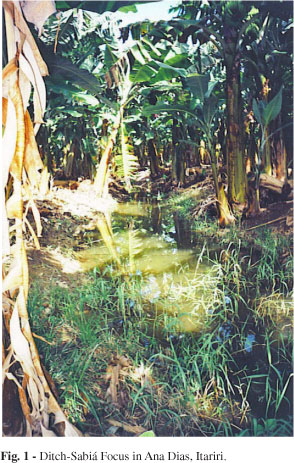To observe the effects of the parasitic infection on the biology of B. tenagophila, field and laboratory populations of this mollusk from Itariri, in Vale do Ribeira, Brazil, were experimentally infected. Each mollusk received 10 miracidia of Schistosoma mansoni (SJ lineage) and was observed throughout the parasite's development. The biological variables were compared according to the criteria "group" and "infectious phase". The main damage caused by the parasitic infection manifested itself in reproduction, longevity and lesions on the shell of the mollusks in the patent phase. An infection rate of 58.8% was observed. Microanatomical study of the mollusk's digestive gland and ovotestis revealed the presence of evolving larval forms and cercariae. It was concluded that the effects of the parasitic infection on both populations were moderate, despite the low survival rate of the infected mollusks, the damage did not prevent either reproduction or the elimination of cercariae, which continued for a long time.
Schistosoma mansoni; Parasitic infection; Biomphalaria tenagophila





